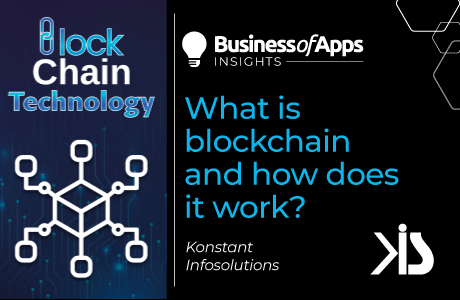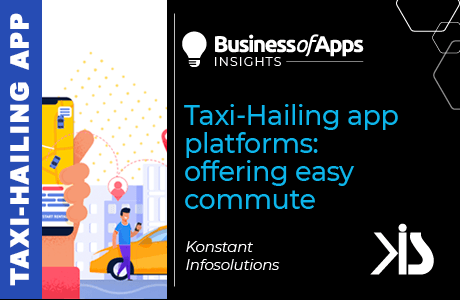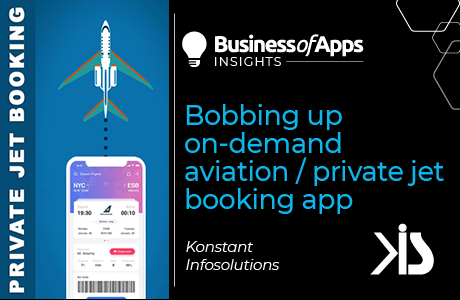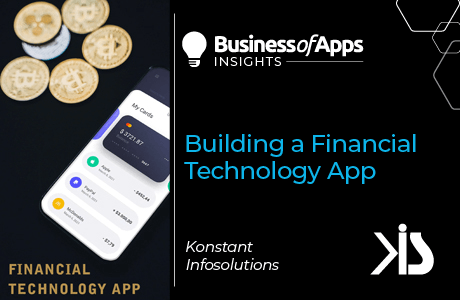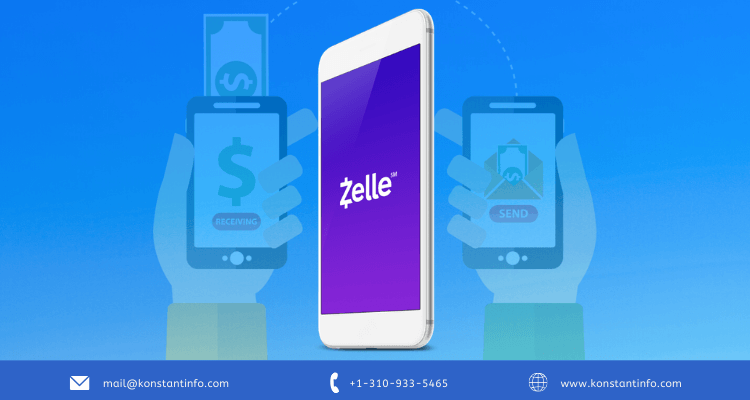
Konstant Infosolutions
Take a look at essential features, steps, types, challenges and benefits of P2P Payment apps like Zelle here.
Digital transactions are a cakewalk with ever-evolving technologies. In a bid to save time and effort, receiving and sending money conveniently, peer to peer payment options like (1) Standalone Payment App, (2) P2P Foreign Exchange, (3) P2P Lending Apps, (4) Bank-Centric Payment Apps, (5) P2P Cross-Border Transfer Apps, and (6) Social Media Centric P2P Payment Apps come up with simple yet comprehensive features to accommodate every requirement.
What can a P2P payment app do?
Making payments to merchants, landlords, taxi/cab’s, paying rent, borrowing money for fees, transferring money to friends and family, splitting a dinner bill at the restaurant, sending remittances, paying for utilities, internet, conveniences, and other facilities.
Must-Have features in P2P payment service options
The features to be included with a particular P2P Service App largely depends upon the business model it follows:
- Bank Centric Solutions: Suitable for Zelle, Dwolla, ClearXchange, PopMoney, etc.
- Standalone Financial Services: Suitable for Venmo, PayPal, Square Cash, Alipay, M-Pesa and Airfox, etc.
- Mobile OS/Device Manufacturers: Suitable for Apple Pay, Samsung Pay, Android Pay, etc.
- Social/Messaging/Web Platforms: Suitable for Snapchat, Facebook Messenger, Kik, WeChat, G Pay Send, WhatsApp, Square Cash, etc.
Features to Be Included in the NFC Payment App:
- Push and In-app Notifications
- Fingerprint Security Lock
- Buy and Sell Crypto-currency
- A Unique ID/OTP
- A User Digital Wallet (for all special offers, in-app funds, card discounts, etc.)
- Send/Requesting Money
- Generating an invoice
- Securing transaction history
- Transferring the amount to a bank account
- Messaging
- Data encryption
- Two-factor authentication
- PCI-DSS and other regulations compliance
- Online eCommerce payments
- On-the-spot payments at retailers
- P2P payments within the system’s network
Challenges in Peer to Peer Payment apps
Of course, there are some inherent challenges which are difficult to be ruled out like:
- Security Challenges
- Conversion of Currency
- Regional / Geographic Limitations
- Peoples’ reluctance to change mindsets
Best P2P Payment applications in 2020
| Payment App | Best For |
| Zelle | Credit Union Members |
| Google Pay | Android users |
| Samsung Pay | Samsung users |
| Apple Pay | Apple users |
| PayPal | Low fee transactions |
| Circle Pay | Sending money to other countries |
| Zoom | |
| Square Cash | Sending small amounts of money |
| Venmo | |
| Facebook Messengers | No-fee transactions and Facebook Lovers |
The Effect of Peer To Peer Payment systems
The peer to peer payment options is on an all-time high. One of the companies that have recently gained traction and is capitalizing on the trend is Zelle – owned by bank of America, Capital One, BB&T, Wells Fargo, JPMorgan Chase, CitiBank, PNC Bank, US Bank, etc.
Bank of America recently reported that it experienced record-breaking P2P payments with its active Zelle customers already completing more transactions. Such payments have been adored in the US and the rest of the globe is in the process of showing an increasing adoption. P2P payments involve consumers sending money to friends, colleagues, and family through Peer to Peer Payment App. Prevalent examples include Zelle, Venmo, Square Cash, Facebook Messenger, Google Pay, PayPal, etc.
As sensed by eMarketer there were almost 82.5 million mobile phone peer-to-peer (P2P) payment users in the US which makes for almost 1/3rd of the mobile phone population. It is predicted that over half (52.5%) of all mobile phone users will be acquainted with P2P transactions by the end of 2022.
P2P Payment app Zelle’s growth trajectory
The major reason behind the increasing number of P2P payments is the millennials’ or people of younger age groups. Later have an inherent urge to try different things and get engaged in the lure of special offers or quick cashback.
Early Warning (research) diagnosed that nearly half (49-50% of millennial smartphone users in the US receive and send money via P2P payment options at least once a week. (Note: Early Warning offers layered multi-factor authentication via a single integrated platform as well introduced Zelle Network – which was the first-ever p2p payment service in real-time.
P2P Payment benefits of Zelle app
Additionally, Zelle was introduced with much-known product benefits like:
- Providing an innovative and mobile-first payments platform
- Attracting and retaining customers
- Reducing cash and checking the management expenses by digitizing transactions
- Enhancing the customer experience
- Increasing brand visibility with the reach of the Zelle brand
Zelle’s working principle
Taking Zelle as an apt example, there are three ways in which it works:
- Enabling your customers to send and receive money with friends, family, and others they trust (within minutes)
- Sending corporate or government payments to almost anyone in the United States using only the recipient’s email or U.S. mobile number.
- For landlords, dog sitters, plumbers and more, Zelle enables small businesses to send and receive money directly from their mobile banking app.
Banks may never be able to understand Zelle’s economics. There is no deeper engagement or retention benefit and the transaction costs for Zelle transactions are not insignificant. B2C transactions are more or less taking place or getting replaced by P2P in many cases thus blurring the clear demarcation.
Is there any winner in P2P Payments war?
Q2 and Cornerstone Advisors (research) exuviates the P2P payments market and reveals the nuances in understanding who’s winning–and who will win–the P2P payments battle. Some facts about mobile P2P payments that make calling a winner at this point a bit premature:
- Banks still exist and are the current leaders in every kind of P2P payments.
- Venmo adoption has so far been wider than that of Zelle.
- Most mobile P2P users are not dependent upon just one service.
- The size of each transaction also varies by service and age group.
- Popularity still goes in this way: Google Wallet > Venmo > Zelle
There is no particular winner in the P2P payments market, even if Zelle demonstrates impressive growth rates and transaction volumes. The fight isn’t fair because people tend to make use of the platform according to their reach and availability at the vendor’s side. There is no P2P payment option by default.
Create a P2P mobile App
Steps to be followed while creating a P2P Mobile Payment App – Selecting P2P Payment App Type, prioritizing Mobile App Platform, adding features for P2P Payment App (discussed above), considering all Security Issues including PCI DSS compliance (Securing, maintaining, testing, updating financial data regularly), creating interactive UI/UX, conducting proper testing and ensuring regulation compliance.
Also, native applications are known to quickly load all e-commerce sites 20-30% faster than their cross-platform counterparts. This fact must be considered while selecting technology for the P2P Payment application.





